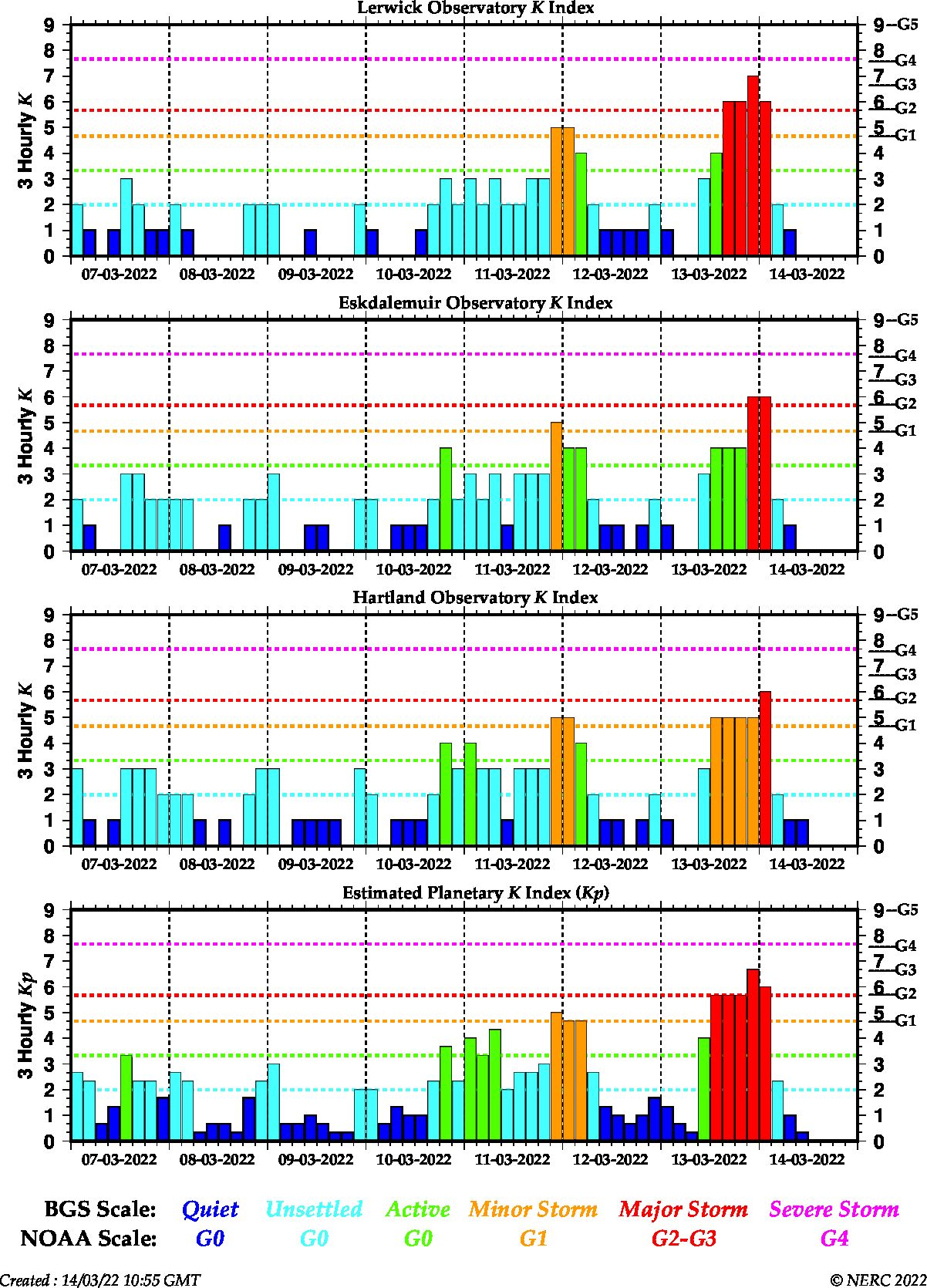Space Weather Alert Update - 14th March 2022
What Has Happened?
The full-halo Coronal Mass Ejection (CME) associated with the long duration C-class flare observed in the evening on the 10th of March arrived at approximately 10:45 UT on Sunday 13th of March, causing a significant disturbance to the Earth’s geomagnetic field.
The interplanetary magnetic field (IMF) strength increased to 25nT during late afternoon hours, and then proceeded to turn southward (negative), favourable for geomagnetic activity, with a peak of -24nT. The resulting major STORM G2 period lasted for several hours, with the estimated planetary Kp index reaching above 6 for a period around midnight.
Solar wind and IMF remain slightly elevated in the wake of the CME, but are expected to gradually return to background levels over the next couple of days. Further chances of brief ACTIVE and STORM intervals today are still anticipated.
Sign-up to receive Geomagnetic Disturbance Alert emails.
Follow us on Twitter:
Follow @BGSauroraAlert for more occasional aurora alerts.
Follow @BGSspaceWeather for daily space weather forecasts.
Glossary
- BGS
- The British Geological Survey is one of the Natural Environment Research Council's Research Centres.
- CME or Coronal Mass Ejection
- The eruption of a portion of the outer atmosphere of the Sun into space, caused by rapid changes in its magnetic field. Often occurs along with a solar flare.
- Solar Flare
- Energy released by the explosive reorganisation of magnetic fields within the Sun's atmosphere.
- Solar Wind
- The ever-present expansion of the Sun’s hot outer atmosphere into the solar system, which carries space weather within it.


